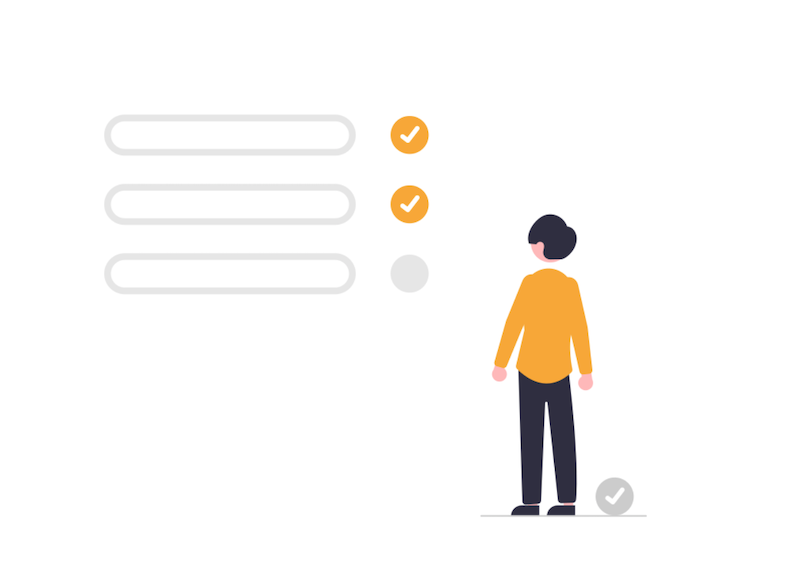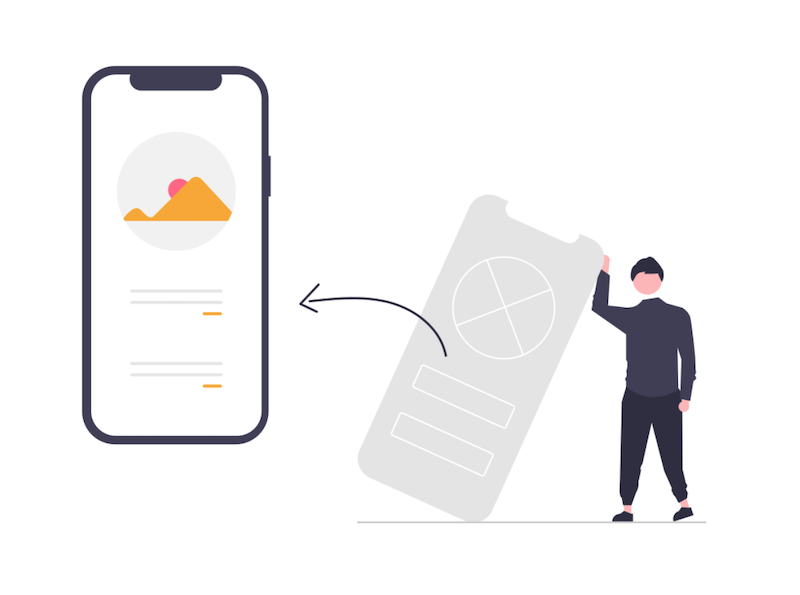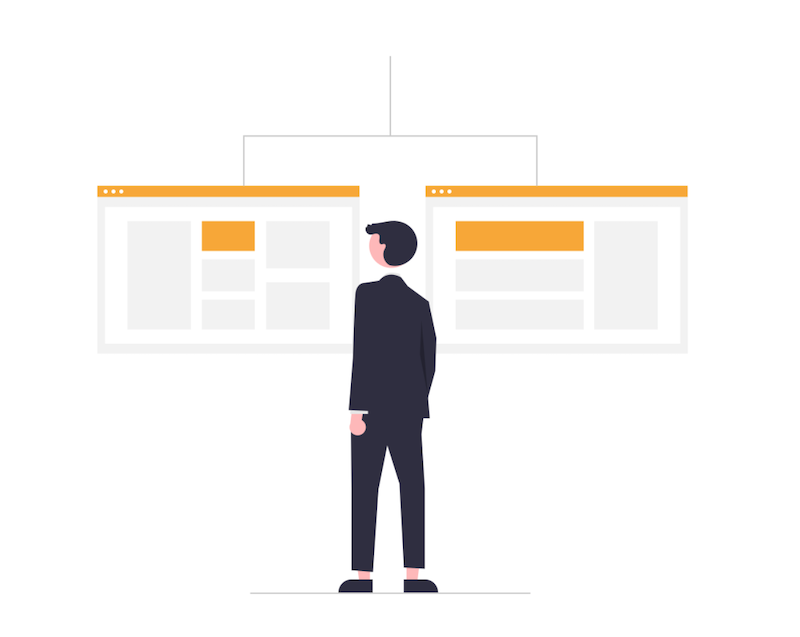Main Stages in the Development of an ERP System
In every business or company’s work process comes to the stage when handling everyday tasks like accounting, management, and other operations becomes more and more difficult. If something goes wrong or if more issues appear, the results will only disappoint.
But we live in a world where people develop new ways to systemize and organize complex work processes, which resulted in ERP system development. And now there are a lot of businesses that saw the need in using it.
In this article, we will go over what ERP software is, what its pros and cons are and what steps you’ll need to take in order to plan and create a perfect one for your company.
ERP software easy explanation:
Enterprise Resource Planning or ERP is a type of software that companies can use to optimize processes like accounting, project management, supply chain and to keep data organized and analyzed.

ERP software can also help in planning, budgeting, and reporting. The system allows all people from your company to access stored information in it, no matter what department or role they have.
There are many reasons why companies choose to implement a custom ERP system, but it also has its drawbacks. So, let’s see what pros and cons there are regarding ERP software development.
Pros of using a custom ERP system:
- Easy-to-use. If you decided to invest your money into the development of an ERP system, you can be sure that it will be easy to use. Custom development will let you define what features your business needs to grow faster. You can adapt the ERP software to your company’s goals, and to people’s roles. There is always another way: finding and using third-party software, but it can result in being not suitable for your business and not being comfortable in use. Usually, you would need to adapt your business processes for the third-party software and this takes your time and resources. These small details can lead to undesired results and reduced efficiency.
- Module creation. Custom ERP system is good because you’ll be able to choose the modules that will make your business processes flow easier and without mistakes. You can choose what features your people need in order to work quicker and what will help them. So the system won’t have unnecessary functionality.
- Maintenance. Sometimes software programs don’t work properly or have bugs. And usually, it happens when you most require the system. In the case of a third-party ERP software you’ll have to spend time contacting its support team, explaining what happened, and waiting for them to find out what needs to be done and finally fix it. And if you have custom software, your development team already knows the system in and out and can quickly fix the issue. This can save you not only time but also money.
- Easy-to-learn. During the ERP system development process, you have the opportunity to learn more about what your people need for efficient workflow and adapt the software to their requirements.

If the software is created specifically for your company and your employees, then it will be much easier for them to learn how to use it and understand why the system has certain features and how they will be using it for work.
Cons of using a custom ERP system:
- Price. The first drawback that prevents a lot of companies from using custom ERP software is the cost of developing it. Development of it will cost you more than paying for a third party’s end-product. Because of that many businesses choose to save on development and buy a subscription. This is also a possible solution, but you have to remember that if you choose to use it, then you also save on your people’s comfort and greater results in the future. Sometimes, software with subscriptions won’t be as useful, right for what you need and in the end, it can result in having to deal with even more problems.
- Finding developers. An important step in ERP software development is finding the right developer for it. The developer has to know the essential details for creating the architecture and planning ERP software development process.
- Time. Good things take time, and we can say the same about the ERP system development process. The development of the software will not only require you to spend money but also time. Because it will be created specifically for your company, you’ll have to wait a few months before you can start using the first version of your custom ERP.

Main stages in the development of an ERP system:
1. Start small
With important things like developing software, it is crucial to not rush and start small. First, you need to define what you really need: what features your employees need in solving everyday tasks and problems, how the software has to work, what logic it will have. You need to have a clear vision in mind and create a list of reasons why ERP solutions are important in your case, what exactly you need, and how you see it.
You can’t just dive right into the development and expect to have a perfect system in the end, so take your time at this stage and think about what things are essential.
2. Design
After you define your needs, you can come to the UI/UX Design stage. The design will help you to create ERP software that is user-friendly, easy in learning, and meets your business goals.
At this stage, your designer chooses the element placement, transitions between screens, details like colors, button size, typography, the style that will define how your people will use it, and what they will feel.
And choosing the right or wrong design will make the work quicker or slow it down. That’s why even the first wireframes are important because you’ll be able to see right away what will work and what won’t and change it.
3. Technology stack
For different needs, the developer will need to choose a different technology stack. And for this, you had to take step 1 and decide what exactly type of software you want to have, what platform you’ll use. For every idea there are multiple possible ways of developing it.
You will have to choose whether you’ll use desktop or mobile version, Android or iOS operating system, if it will be available for use online only or offline as well, or if it will be just a cloud-based ERP.
The developer has to know these things because this will define what programming language, frameworks, databases, and third-party services they will need to use. Moreover, knowing these things will help you choose the right developer to work with from the start, so you won’t spend money and time on explaining to the wrong people what you need.
4. Development
This stage can be for some people one of the hardest because here you’ll need to give the developers time and wait till your resource planning software is done. And not everyone can be patient enough for that. But it doesn’t mean that you won’t have any role here. At this stage, you take part in meetings, track the progress and discuss new features.
The results are always better when the customer takes an active part in the process. If you did the previous steps and chose the right people, then now is the time to give them the opportunity to bring your ideas to life.
5. Testing
Testing is one of the most interesting parts of the ERP system development life cycle. Quality assurance helps make sure that the product was developed according to initial requirements and works correctly.
This step prevents you from having problems later during work, and make sure that it will be easy to use for your employees. Even though you can be sure that the developers did everything correctly during ERP software development, you can’t neglect this step.
6. Finished product
And finally, you’ve come to the best part of the ERP system development process, where you can see the final result of what you worked on and present it to your team.
You can share this step with your employees, explain to them every detail, every step, and help them see the worth of using a custom ERP system. After the resource planning software is finally implemented, it is possible that your internal processes can change for the better.
For example, employees will always have the access to needed data, they won’t need to spend so much time doing repetitive tasks, and will be able to manage information better. Give them a chance to use the software, and you’ll see how everyday workflow changes and becomes more efficient.
Many reasons to choose ERP
ERP software becomes more and more important for businesses and companies and there are many reasons why they choose to use it. We went through the explanation of exactly what it means for the business, listed the pros and cons of developing a custom ERP system, and showed the main stages to creating and planning the system.
Creating a custom resource planning software may be exactly what your company and employees need. It is a great investment if you want to help your teamwork quicker and more efficiently, without fearing that the quality of results will suffer.


ERP software handles the management of main business processes in real-time. ERP applications collect, store, manage and interpret information from various business activities. In some sense, ERP software is a mediator between all core business processes. All details on erp software development